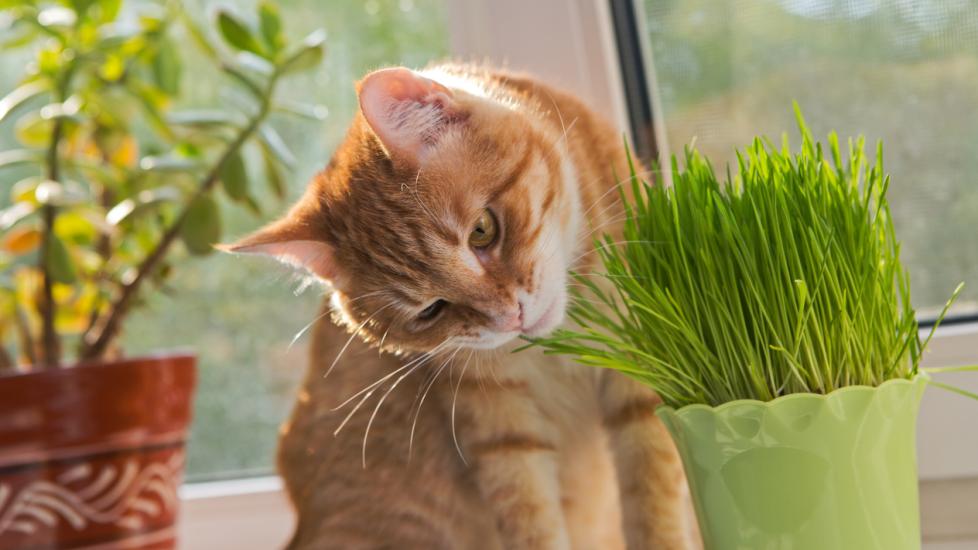Does Catnip Make Cats High?
You may have given catnip to your cat at some point and wondered whether cats can actually get “high” from it.
The effects are obvious (and entertaining): after smelling the catnip, most cats will rub their faces in it, roll on their backs, and vocalize (make loud noises).
Although some cats will exhibit more subdued behaviors—a “sphinx-like posture” is reported in one study—
Do Cats Get High on Catnip?
With respect to catnip, there is reason to believe that cats may experience something like the highs achieved by pioneering marijuana users 60 years ago.
According to a recent paper, catnip works through the body’s internal opioid system. W
This theory is supported by the fact that
Although reports that the herb induces LSD-like hallucinations are probably overblown (and difficult to prove), catnip is nonetheless a safe, cheap, and effective way to give your cat some short-lived enjoyment.
How Long Does It Take for Cats to Get High on Catnip?
Cats begin to feel the effects of catnip within a few seconds. The duration of the effect is variable, but typically lasts around 10 minutes and rarely more than 15. Interestingly, there is a refractory period with catnip; after experiencing whatever “high” they may feel, it takes about 1-2 hours before cats become susceptible again to its effects.
Can Cats Get Addicted or Develop a Tolerance to Catnip?
Take note that cats cannot experience opioid withdrawals from repeat or even frequent exposure to catnip, as endorphins are tightly regulated in their release, but cats can develop a mild tolerance over time.
Can Cats Overdose on Catnip?
It’s not possible for a cat to fatally overdose on catnip. Although ingesting a large volume of the plant can cause vomiting and diarrhea, these symptoms are rare and resolve with time.
Catnip Highs as Evolutionary Rewards
The
Feline species tend to stalk their prey in tall grass or dense brush, where exposure to insects is inevitable. Mosquitoes enjoy feeding on cat ears, where blood vessels are superficial and relatively unprotected by fur.
As mosquitoes can transmit heartworms and induce profoundly itchy allergic reactions in cats,
Across affected species—leopards, cougars, servals, lynxes, jaguars, and lions, among others—rubbing the face in catnip is one of the most common behaviors, further underscoring the theory that catnip susceptibility confers an evolutionary advantage by keeping away disease-causing insects.
In essence, cats are rewarded with pleasant, endorphin-induced sensations for protecting themselves against insects to improve their odds of survival in the wild.
Catnip Highs vs. Human Drug Highs
While our ability to understand the subjective experience of cats is limited, we do have some sense of how the plant affects people. There was a brief period in the 1960s when the cheaper and more readily available catnip was mixed with tobacco or marijuana and smoked.
After smoking catnip, people reported having visual and auditory hallucinations and feeling “happy, contented, and intoxicated,” similar to feelings induced by marijuana.
Of course, cats are not small people. We cannot assume that what’s true for us holds true for cats. Drugs that work in humans are often unsafe or ineffective in pets. For example, over-the-counter medications like acetaminophen are relatively safe in people but can be lethal for cats. And with some exceptions, antihistamines are often ineffective in controlling allergies for pets.
What's the Strongest Type of Catnip?
Various forms of catnip exist, including sprays, dried leaves, and the entire plant. Although each varies in its concentration of nepetalactone, there is minimal difference in how profoundly these different forms affect cats.
Since catnip is not a drug, its effects don’t depend on the amount given or the concentration. There only needs to be enough nepetalactone to trigger the endorphin response. This causes a cat’s body to release those endorphins at a strictly regulated level that is not proportionate to the amount of nepetalactone inhaled. This is why cats cannot fatally overdose on catnip.
Featured Image: iStock.com/Okssi68
